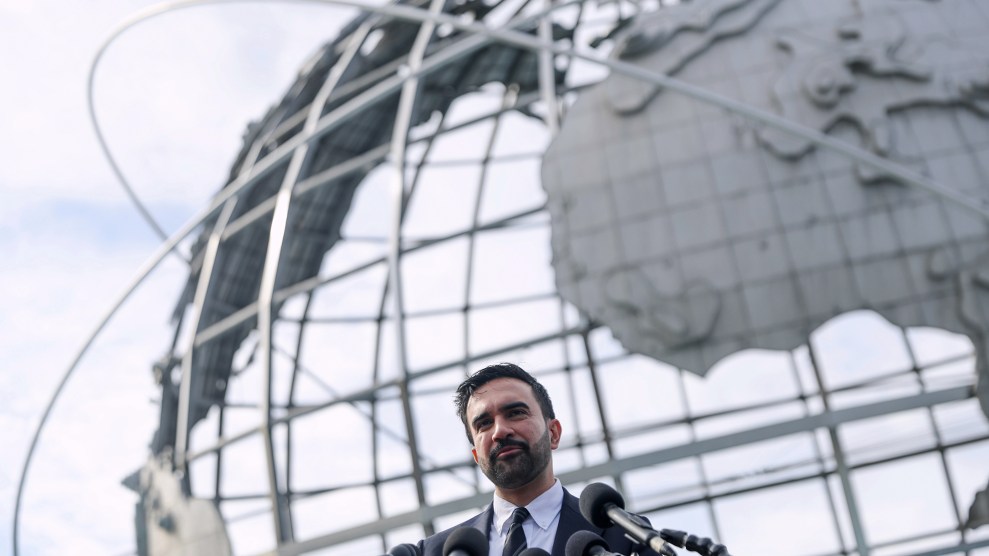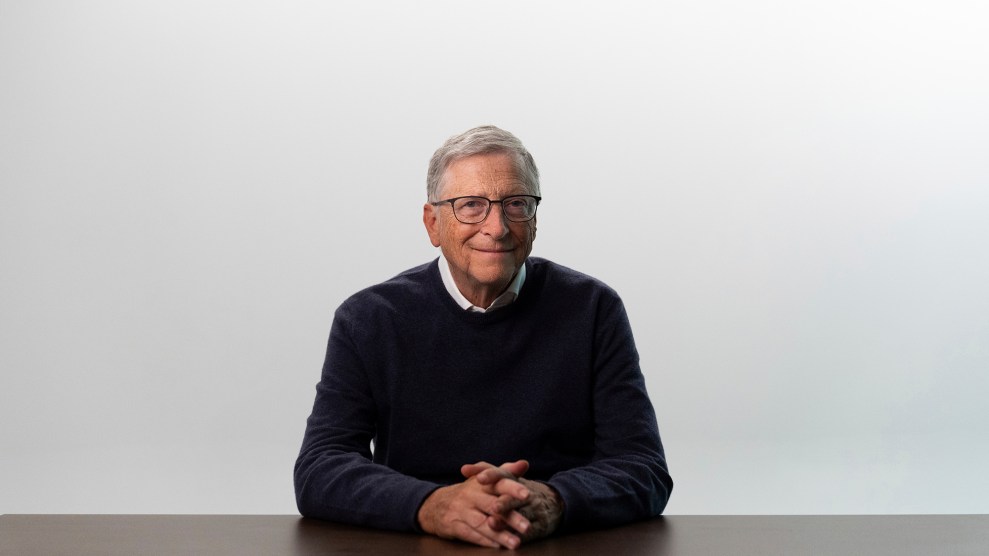Mother Jones: What is Google bringing to green tech investment that isn’t already there?
Bill Weihl: If you think of it from an investment point of view, I think that the real thing we bring is very patient capital: a willingness to take what others might perceive as perhaps a larger risk—though I think depending on how you evaluate the risk, it’s debatable how large the risk actually is—and a focus on a very aggressive, audacious goal.
Over the last several years, I’ve had a lot of conversations with venture capitalists and people working in [green tech] companies—start-up companies as well as established ones—and the thing that has struck me is that most of them are to some extent counting on policy changes that will drive up the cost of carbon emitting generation methods to make their approach really competitive from a cost point of view. I think counting on that as the thing that is going to save us in terms of the climate problem is a mistake. So our major focus is, let’s drive down the cost of renewable technology as fast as possible and get to where we can really compete economically with coal as quickly as possible.
MJ: Google’s investment in this sector is pretty small given its market cap. Does that mean you don’t see the same moneymaking potential there as in Internet search?
BW: Right now, our major revenue source is our core business. But the revenue potential in the energy sector dwarfs the sector we are in today.
MJ: What kinds of clean-energy technology is Google developing in-house?
BW: The major focus right now is on solar-thermal technology to generate electricity. Solar-thermal electricity involves using some form of reflective system to concentrate the sun’s energies to very high concentrations—100 times, 500 times, or above—to make steam. Sometimes they make steam directly; sometimes they heat something else up that then is used to make steam and then use that to drive a steam turbine. This is maybe one of the best-kept secrets in the renewable energies business.
There have been 315 megawatts of solar-thermal generation happily generating power for the last 15 to 20 years down in the Mojave Desert in Southern California. And that field went dormant for probably 15 years because of the crash in natural gas prices and other things that happened in the early ’90s. But in the last few years there has been a resurgence, and we see technology opportunities that are currently really underexploited. We think more attention could drive the cost of that down substantially to the point where it really could be competitive with coal.
MJ: What are some of the other most promising new energy sources?
BW: An important one that has a lot of potential is enhanced geothermal systems or engineered geothermal systems, typically abbreviated EGS, sometimes called “hot dry rock.” There was a big report on this out of MIT last spring. In contrast to traditional geothermal, you don’t need to find a reservoir of hot water that you can tap into to make power. Instead, you drill deep underground to a place where you find hot rock, often granite or something like that, that you can fracture in much the same way that oil companies will fracture the rock to be able to extract oil. Then you inject water to create an underground reservoir and use the water as a fluid to extract heat. The interesting thing about this is that it has the potential to get to higher temperatures than traditional geothermal, which means it could be economically practical and useable much more widely. The other nice thing about it compared to wind and solar is that it’s essentially a base-load generating source. In other words, it’s just there all the time. Whereas wind and solar are intermittent.
MJ: What do you think is the most overhyped clean technology?
BW: Oh my, I can make a lot of enemies by answering that question. I think I should stay away from that. Over a beer, not on the record, I’d be happy to rant and rave about some.
MJ: What do you think it would take for renewable energy to go mainstream?
BW: This is where I get worried. If you look at the amount of energy that’s needed in 2050 and the amount of infrastructure that needs to be installed between now and then, it’s staggering. I don’t see the current capital markets being in a position to generate the investment needed to make that kind of infrastructure happen. We need investment in the technology to drive down the cost, and we need a lot more investment.
We think that focused investment with some small teams of very smart people has the chance to really make some breakthroughs there. But then we are also going to need investment in manufacturing and building and installing these systems at enormous scale and growing that industry at a really incredible rate. And it’s not clear to me what the right way is to make that happen yet.
MJ: What is the one policy change you think would go the furthest toward cutting fuel consumption in the U.S.?
BW: California has been incredibly successful over the last 30 years at pretty much holding constant per-capita electricity consumption. It’s now 30 to 40 percent below the average for the U.S. as a whole compared to 30 years ago. And that’s been done through policy changes that have put in place energy-efficiency standards for large appliances and things like that that have incentivized utilities to invest very substantially in energy-efficiency programs. Those kinds of programs have been incredibly successful. I think if we can replicate that across the country, and for that matter, in other places around the world, that can make a huge difference. We could over the next 20, 30 years reduce our energy consumption by 30 or 40 percent or more compared to what it would otherwise be.
MJ: What’s your favorite personal energy-saving tip?
BW: Make sure your computer puts itself to sleep if it’s idle for more than 15 or 30 minutes. If you leave it on it’s like leaving a 100- or 200-watt lightbulb burning all the time. Most people might leave a lightbulb on when they leave a room for five minutes, but they’re unlikely to just leave a big lightbulb on all the time day after day after day, 24 hours a day. But that’s what we do with our computers, and it makes no sense.
MJ: What kind of car do you drive?
BW: We have a Prius that we’ve had since early 2001. And we also have a small minivan, which is less environmentally friendly but when you’ve got to carry seven people, given we have kids and often we are carrying more than the Prius will hold, it’s a reasonable option. I’m looking forward to the day when we can buy something like a minivan that gets significantly better gas mileage.
MJ: When will we see the last gasoline-powered Hummer?
BW: You make that happen through politics. I think it would probably be a long time, but I would hope for environmental reasons we’ll see a lot fewer of them, or that they’ll start making cars like that using other technologies so they can get much, much better mileage.

















